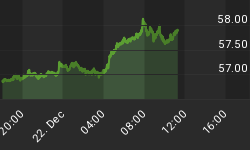The chart below shows the behavior of U.S. import prices from the European Union, Japan and the Asian NICs (Hong Kong, Singapore, South Korea and Taiwan) in recent years. Notice that the growth in import prices from the European Union has far outpaced that from Japan and the Asian NICs. Of course, the principal explanation for this is that the dollar has depreciated more in recent years against the European Union currencies than against the Asian currencies. And, of course, the principal reason for these differences in dollar depreciation is that the European Union central banks have not intervened to prevent the rise in their currencies whereas the Asian central banks have intervened. If China finally relents and allows the renminbi to appreciate against the dollar, there is a high probability that other Asian monetary authorities will allow more appreciation of their currencies versus the dollar, too. In 2004, about 20% of our goods imports originated from the European Union while 33% originated from the Pacific Rim. Thus, a given percentage depreciation of the dollar versus Asian currencies would likely put more upward pressure on import prices and consumer prices than would a depreciation against European Union currencies. For the sake of U.S. inflation and Fed rate hikes, let's hope the Chinese resist our self-destructive harangues. (For a like opinion on our self-destructive ways with regard to the renminbi, see Phillip Swagel's op-ed piece "Yuan Answers?" in the June 10th edition of The Wall Street Journal.)
















